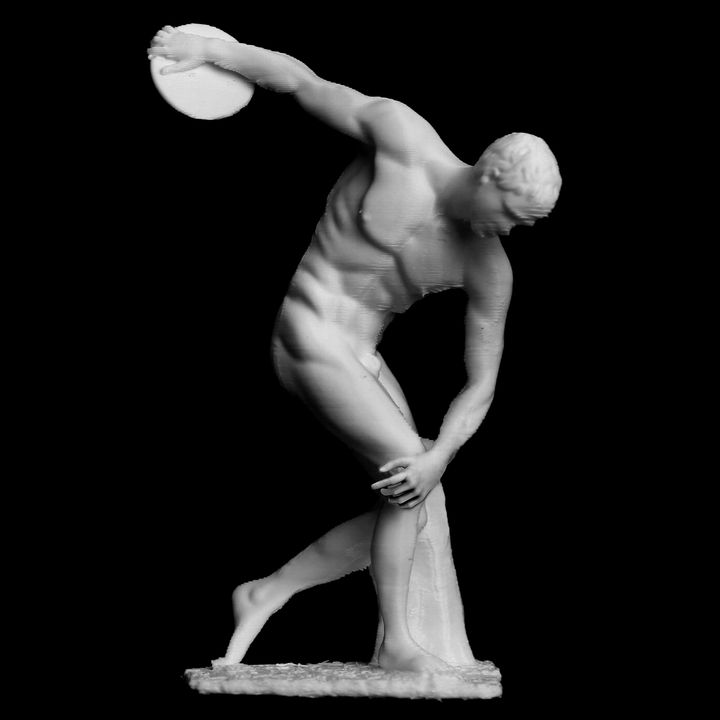
Discobolus at The British Museum, London
myminifactory
The Discobolus of Myron, a Greek sculpture completed towards the end of the Severe period, circa 460-450 BC, is known through numerous Roman copies. The original Greek bronze is lost, but full-scale marble versions like the Palombara Discobolus and smaller scaled bronze ones give us an idea of its grandeur. A discus thrower is depicted in a moment of action, his muscles tense as he prepares to release the discus. Myron has captured the essence of athletic energy with this sculpture, taking a fleeting moment in time and giving it the completeness of a cameo. The pose is unnatural, but it's an example of rhythmos, harmony, and balance that Myron mastered. The sculptor's desire for perfection led him to suppress the sense of strain on individual muscles, making the discus thrower's face seem emotionless. The body's proportion, or symmetria, is another hallmark of Myron's work in this sculpture. The potential energy expressed in the tightly-wound pose is an example of Classical sculpture's advancement from Archaic styles. Despite the limbs being outflung, there's no muscular strain on the torso. After the discovery of the Discobolus Palombara in 1790, a second notable Discobolus was excavated at Hadrian's Villa in 1792. The English antiquary Thomas Jenkins purchased it for £400 and took it to his gallery in London, where it arrived in 1794. However, the head was restored incorrectly, as Richard Payne Knight pointed out. This marble statue is one of several copies of a lost bronze original attributed to Myron (flourished about 470-440 BC). The head on this figure has been wrongly restored and should be turned towards the discus. The popularity of the sculpture in antiquity was due to its representation of the athletic ideal, with discus-throwing being the first element in the pentathlon. A number of ancient discuses survive, but little is known about distances achieved in antiquity. An epigram celebrating a throw of 30 metres comes as a surprise, given today's world record of just over 70 metres. The ancient technique of discus-throwing may have been different, with only three-quarter turns rather than the two and a half used today. This object is part of "Scan The World", a non-profit initiative by MyMiniFactory to create a digital archive of fully 3D printable sculptures for free access worldwide. Scan The World is an open-source community effort where you can contribute your own items by emailing stw@myminifactory.com.
With this file you will be able to print Discobolus at The British Museum, London with your 3D printer. Click on the button and save the file on your computer to work, edit or customize your design. You can also find more 3D designs for printers on Discobolus at The British Museum, London.
